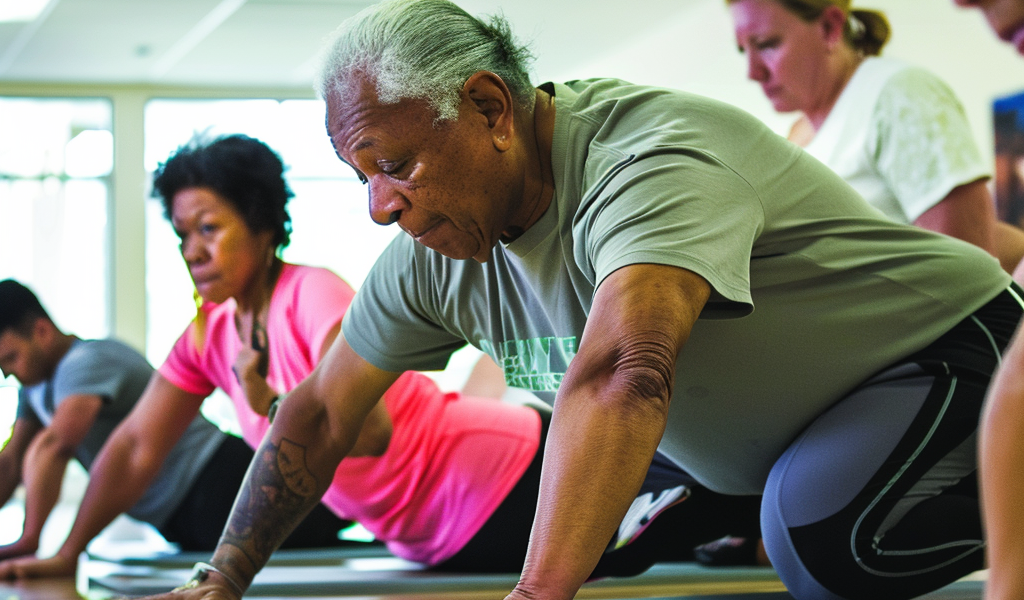In a recent analysis by experts at the Mayo Clinic, the recommended number of push-ups for individuals has been outlined, taking into account age and gender. This classic exercise serves as a reliable indicator of muscular strength and endurance, especially as one ages. The findings reveal surprising benchmarks that can help gauge fitness levels across different age groups.
The push-up, a fundamental exercise that engages multiple muscle groups including the legs, abs, and arms, is performed by maintaining a straight body posture with hands aligned with the shoulders. The movement requires pushing the body up until the arms are fully extended, while balancing on the hands and toes.
The Mayo Clinic’s recommendations begin at age 25, where a healthy male is expected to perform approximately 28 push-ups in one session. For women in the same age bracket, the target is set at 20 push-ups, which signifies a commendable level of fitness.
As individuals progress into their 30s, the expectations shift slightly. At age 35, women should aim to complete 19 push-ups—just one less than the previous decade—while men are expected to manage 21 push-ups, a decrease of seven from their earlier benchmark.
The trend continues as individuals reach their 40s. By age 45, the push-up expectations drop significantly, with women anticipated to complete 14 push-ups and men 16. This decline in numbers highlights the natural changes in strength and endurance that can occur with aging.
In the 55-year-old category, the expectations further decrease, with women expected to perform 10 push-ups and men 12. The final age group assessed in this study is those aged 65 and older. Here, both men and women are expected to be able to do 10 push-ups, reflecting the culmination of the gradual decline observed in earlier years.
Fitness experts, however, caution that these figures should not be strictly interpreted as absolute standards. Natalya Alexeyenko, a personal trainer based in New York, emphasizes that while studies provide valuable insights, personal experience with clients often yields different expectations. “Most of my clients lead a moderate lifestyle and work out two to three times a week,” she noted. Based on her observations, realistic norms might be lower for women by about three to five repetitions and higher for men with a sports background by about five to 10 repetitions when compared to the Mayo Clinic’s guidelines.
Regular exercise, including push-ups, is vital for maintaining overall health and fitness. Engaging in strength training activities not only aids in muscle development but also contributes to improved cardiovascular health and enhanced quality of life as individuals age.
Incorporating push-ups into a workout routine can be a beneficial way to monitor one’s fitness level. As individuals strive to meet or exceed the recommended numbers, they can also explore variations of the push-up to challenge themselves further and keep their workouts engaging.
For those looking to improve their push-up performance, it is important to focus on form and technique. Ensuring the body remains straight and aligned during the exercise can help maximize effectiveness and reduce the risk of injury. Additionally, incorporating other strength-training exercises can complement push-up routines and contribute to overall fitness.
As individuals embark on their fitness journey, understanding the benchmarks set by experts like those at the Mayo Clinic can serve as motivation. Whether aiming to meet the recommended push-up counts or simply looking to enhance personal fitness, the journey is unique to each individual and should be approached with a focus on personal goals and health.
In summary, push-ups remain a staple in fitness assessments, providing valuable insights into muscular strength and endurance across various age groups. With expert recommendations and personal insights from trainers, individuals can tailor their fitness routines to align with their capabilities and aspirations.





